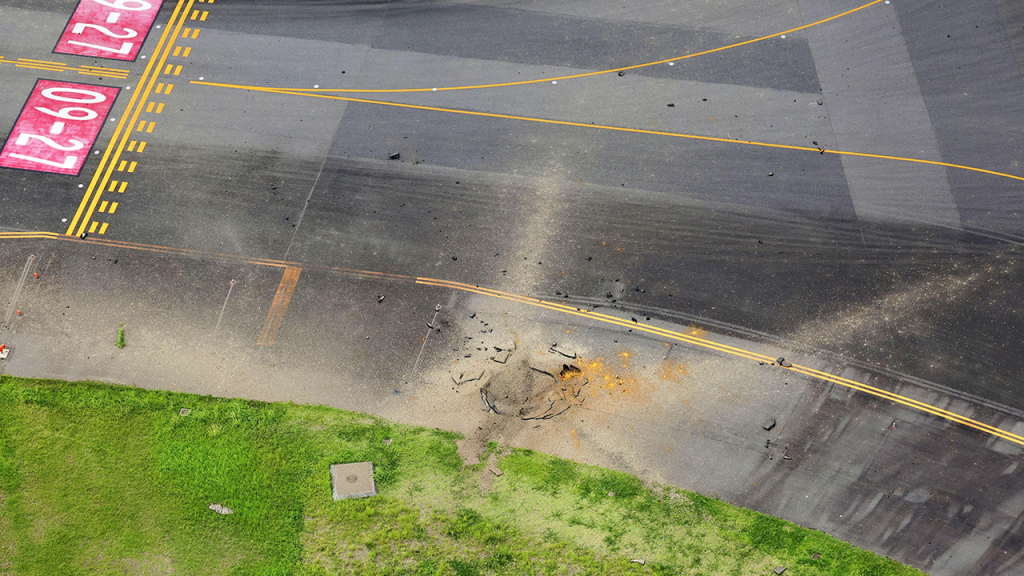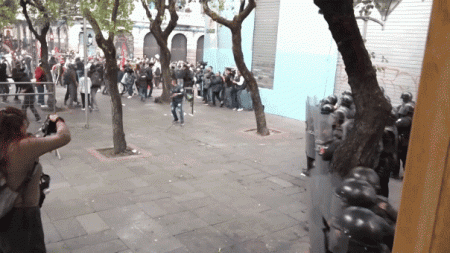A World War II-era American bomb buried beneath the Miyazaki Airport in Japan exploded, causing a crater on a busy taxiway and leading to the cancellation of more than 80 flights. Thankfully, there were no injuries reported and no aircraft were nearby when the bomb detonated. The airport, originally built in 1943 as a naval flight training field, was not significantly damaged by the explosion. It remains unclear what triggered the sudden detonation of the 500-pound bomb.
The blast at Miyazaki Airport on Wednesday was captured on video by a nearby aviation school, showing pieces of asphalt being launched into the air. The resulting crater on the taxiway measured approximately 20 feet in diameter and 3 feet deep. Due to the explosion, more than 80 flights were canceled at the international airport, with efforts being made to resume normal operations as soon as possible. The incident highlighted the ongoing dangers posed by unexploded bombs from World War II, with Defense Ministry officials noting that many such bombs are still buried in Japan.
The history of Miyazaki Airport as a former Imperial Japanese Navy flight training field was detailed, mentioning that some kamikaze pilots had taken off from there on suicide attack missions. The bomb that exploded was one of many unexploded bombs dropped by the U.S. military during World War II, which have been uncovered in the area over the years. This recent incident serves as a reminder of the lasting impact that wartime bombs can have, even decades after they were originally dropped.
Chief Cabinet Secretary Yoshimasa Hayashi provided updates on the situation at Miyazaki Airport, stating that the airport plans to resume operations on Thursday morning. The cancellation of dozens of flights due to the bomb explosion caused inconvenience for numerous travelers, but safety measures were the top priority in the aftermath of the incident. Videos of the blast and its aftermath were broadcast on Japanese TV, drawing attention to the dangers of unexploded ordnance from past conflicts.
Despite the disruption caused by the detonation of the WWII-era bomb at Miyazaki Airport, there were no reports of injuries or major damage. The incident highlighted the ongoing presence of unexploded ordnance from World War II in Japan, with hundreds of tons of bombs still buried around the country. The situation at Miyazaki Airport also underscored the need for continued vigilance and caution when dealing with historical munitions, as well as the importance of thorough investigations to determine the cause of such detonations.
In conclusion, the explosion of a World War II-era bomb at Miyazaki Airport in Japan led to the cancellation of dozens of flights, but fortunately, there were no injuries reported. The incident shed light on the presence of unexploded bombs from past conflicts in Japan, with efforts being made to safely deal with these hazardous materials. The history of the airport as a former naval flight training field added context to the situation, highlighting the enduring legacy of World War II in the region. As authorities work to assess the damage and resume operations at the airport, the incident serves as a stark reminder of the ongoing dangers posed by wartime ordnance.













